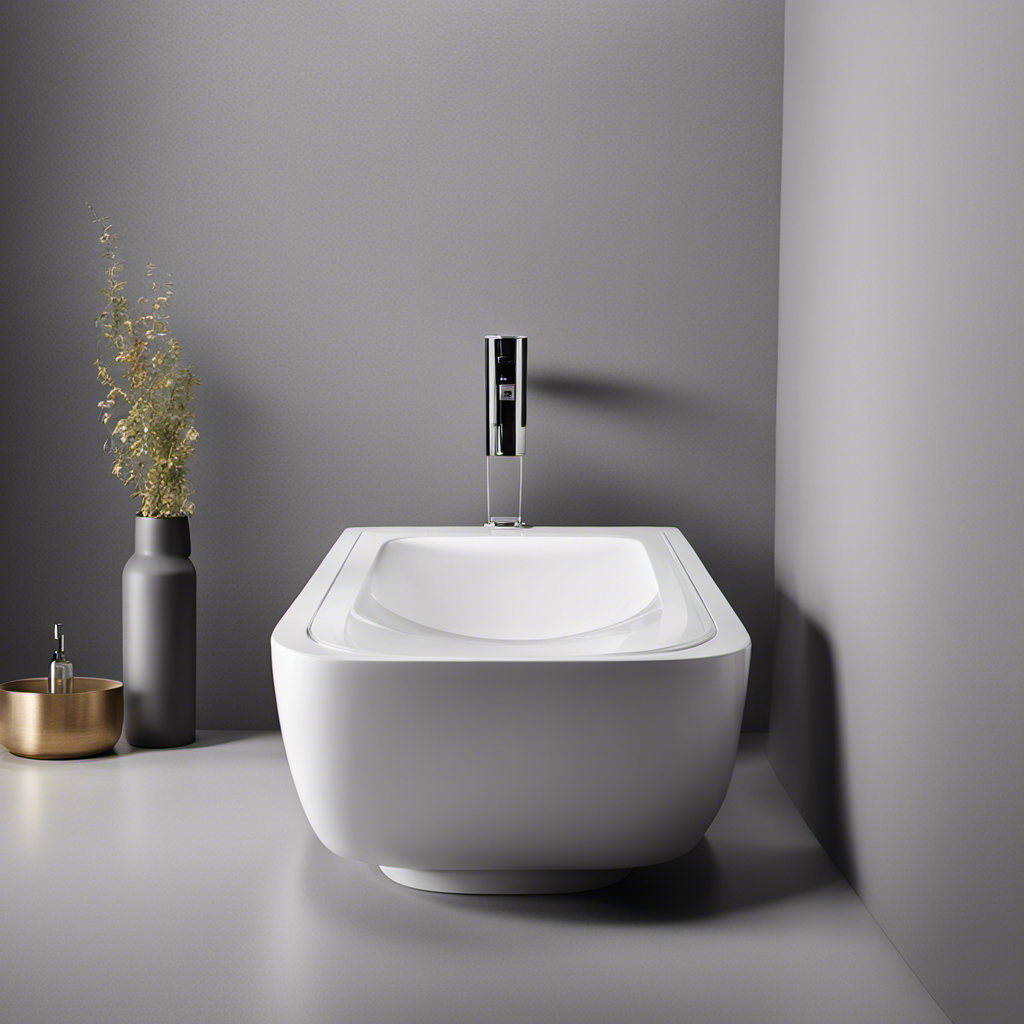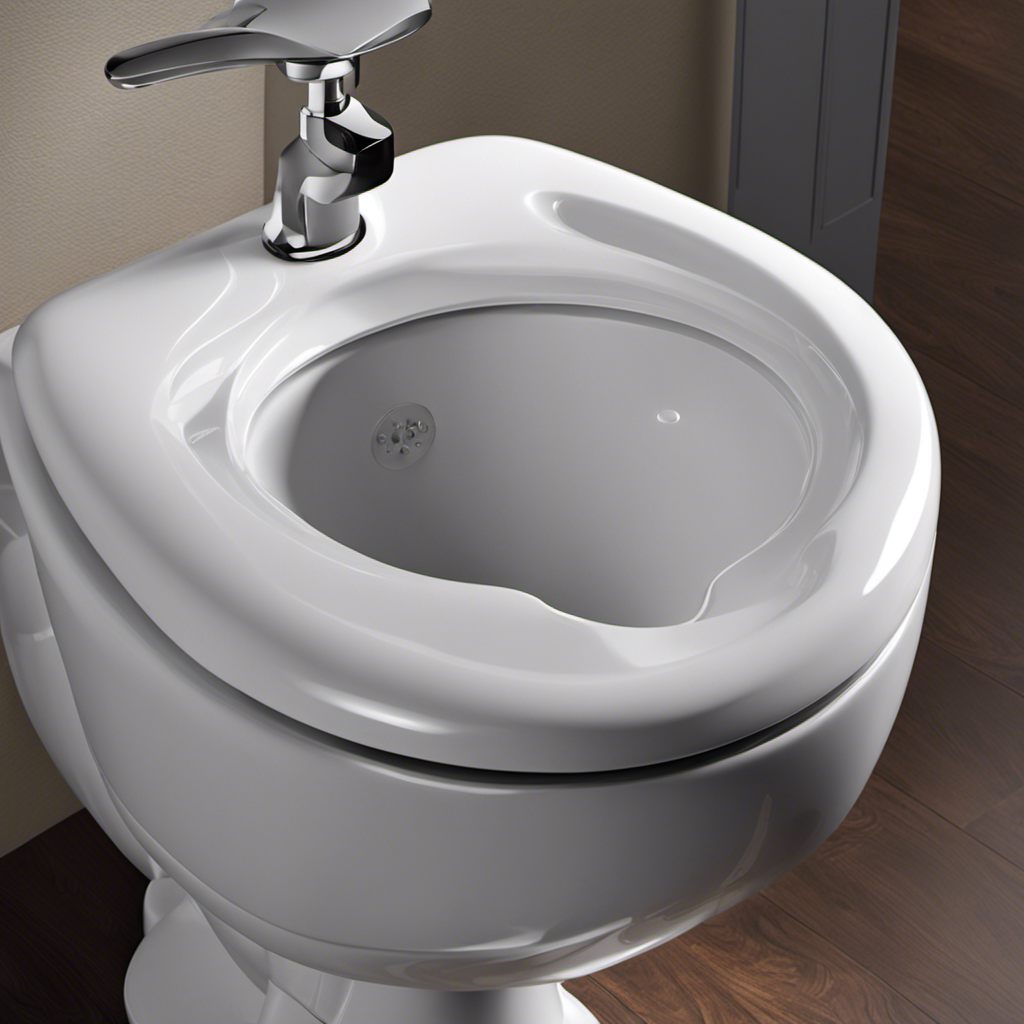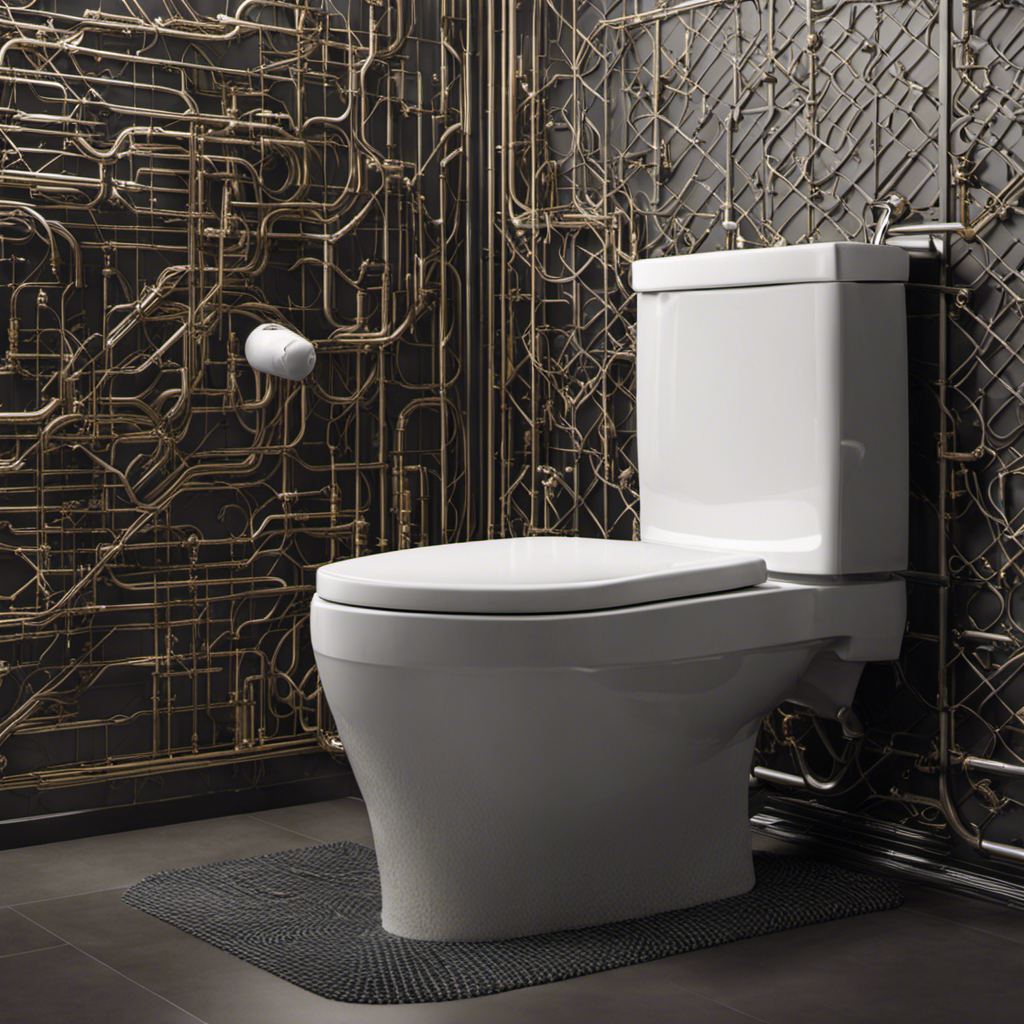I’ve always wondered how much water should be in my toilet tank. It’s one of those everyday things we don’t often think about, but it actually plays a crucial role in our daily lives.
The water level in your toilet tank affects the efficiency of flushing and can even impact your water bill.
So, let’s dive in and explore the importance of maintaining the proper water level, the factors that affect it, and how to adjust it to ensure optimal performance.
Key Takeaways
- Proper water level ensures efficient flushing.
- Dual flush toilets allow for different water levels based on waste type.
- High water level leads to water wastage.
- Low water level results in ineffective flushing and multiple flushes.
Importance of Proper Water Level in Toilet Tank
The proper water level in the toilet tank is essential for its optimal functioning. Maintaining the correct water level ensures efficient flushing and prevents any issues with the toilet’s performance.
One of the key benefits of using dual flush toilets is that they allow for different water levels depending on the type of waste being flushed. This feature helps conserve water by using less for liquid waste and more for solid waste.
On the other hand, improper water levels in toilet tanks can have a significant environmental impact. If the water level is too high, it can lead to unnecessary water wastage with each flush. Conversely, if the water level is too low, it can result in ineffective flushing and the need for multiple flushes, ultimately wasting water as well.
Therefore, it is crucial to ensure that the water level in the toilet tank is set correctly to promote water conservation and efficient toilet operation.
Factors Affecting the Water Level in Toilet Tank
One of the factors that affects the water level in a toilet tank is the float arm. The float arm is a key component of the toilet’s fill valve system, responsible for regulating the water level in the tank.
When the float arm is properly adjusted, it ensures that the tank fills to the appropriate level for optimal flushing performance. Water level maintenance is crucial for efficient toilet operation.
If the water level is too low, it can result in weak flushes and incomplete waste removal. On the other hand, if the water level is too high, it can lead to water wastage and potential overflow issues.
How to Determine the Ideal Water Level in Toilet Tank
To determine the ideal water level in a toilet tank, you can start by adjusting the float arm. This is an important step in maintaining the water level and ensuring that your toilet functions properly. Here are some key points to consider:
- The water level should be set just below the overflow tube to prevent water from continuously running into the bowl.
- A higher water level can result in water waste and potential overflow issues.
- A lower water level may not provide enough flushing power.
- It is important to check the water level periodically to ensure it is at the correct height.
By following these guidelines, you can determine and maintain the ideal water level in your toilet tank.
Now let’s move on to the steps to adjust the water level in the toilet tank.
Steps to Adjust the Water Level in Toilet Tank
Start by locating the float arm to adjust the water level in your toilet tank. The float arm is a small plastic or metal rod that is connected to the float ball or cup. It is usually located on the left side of the tank.
To adjust the water level, you will need to turn the adjustment screw or nut that is attached to the float arm. Turning it clockwise will raise the water level, while turning it counterclockwise will lower the water level.
It is important to adjust the water level to the manufacturer’s specifications to ensure proper flushing and prevent any issues with the toilet.
Regular maintenance of the toilet tank, including adjusting the water level, is essential for troubleshooting and preventing any potential problems.
Remember to check for any leaks or issues with the flapper valve or fill valve as well. These simple maintenance tips can help keep your toilet functioning properly and save water.
Common Problems and Solutions Related to Water Level in Toilet Tank
A common issue related to the water level in a toilet tank is when the float arm gets stuck, causing the water to continuously run. This can lead to wasted water and higher water bills.
To troubleshoot and resolve this problem, there are a few steps you can take:
-
Check the float arm: Ensure that the float arm moves freely and is not obstructed by any debris.
-
Adjust the float arm: If the float arm is too low, the water level in the tank will be too low. Adjust the float arm to raise the water level.
-
Check the fill valve: Make sure the fill valve is functioning properly. If it is faulty, it may need to be replaced.
-
Clean the tank: Remove any sediment or build-up in the tank that may be affecting the float arm’s movement.
Regular toilet tank maintenance and troubleshooting can help ensure the water level in your toilet tank remains at an optimal level, preventing any issues with continuous running water.
Frequently Asked Questions
What Are the Benefits of Maintaining the Correct Water Level in a Toilet Tank?
Maintaining the correct water level in a toilet tank has several benefits. It ensures efficient flushing, prevents water waste, and reduces the risk of clogs. Adjusting the water level without a plumber is easy using the water level adjustment valve.
Can a Higher Water Level in the Toilet Tank Lead to Increased Water Usage?
Yes, a higher water level in the toilet tank can lead to increased water usage. For example, if the float valve is not adjusted correctly, it may constantly refill the tank, resulting in wasted water. Adjusting the water level properly can lead to potential water savings.
How Can a Low Water Level in the Toilet Tank Impact the Flushing Power of the Toilet?
A low water level in the toilet tank can negatively impact the flushing power. It can result in incomplete flushes, leading to clogs and inefficient water usage. Troubleshoot and fix by adjusting the fill valve or checking for any leaks.
Are There Any Environmental Consequences Associated With Having an Incorrect Water Level in the Toilet Tank?
There can be environmental consequences if the water level in the toilet tank is incorrect. It can lead to excessive water usage, negatively impacting water conservation efforts. We must be mindful of our usage.
Is It Possible to Adjust the Water Level in a Toilet Tank Without the Help of a Plumber?
Yes, it is possible to adjust the water level in a toilet tank without the help of a plumber. With some DIY plumbing knowledge, you can easily make the necessary adjustments to ensure the correct water level.
Conclusion
In conclusion, maintaining the appropriate water level in your toilet tank is of utmost importance for optimal functionality. By understanding the factors that affect the water level and learning how to determine and adjust it accordingly, you can ensure the smooth operation of your toilet.
It is crucial to address any common problems related to the water level promptly, as they can have a significant impact on the overall performance. Remember, a well-functioning toilet is key to a comfortable and hygienic bathroom experience.










